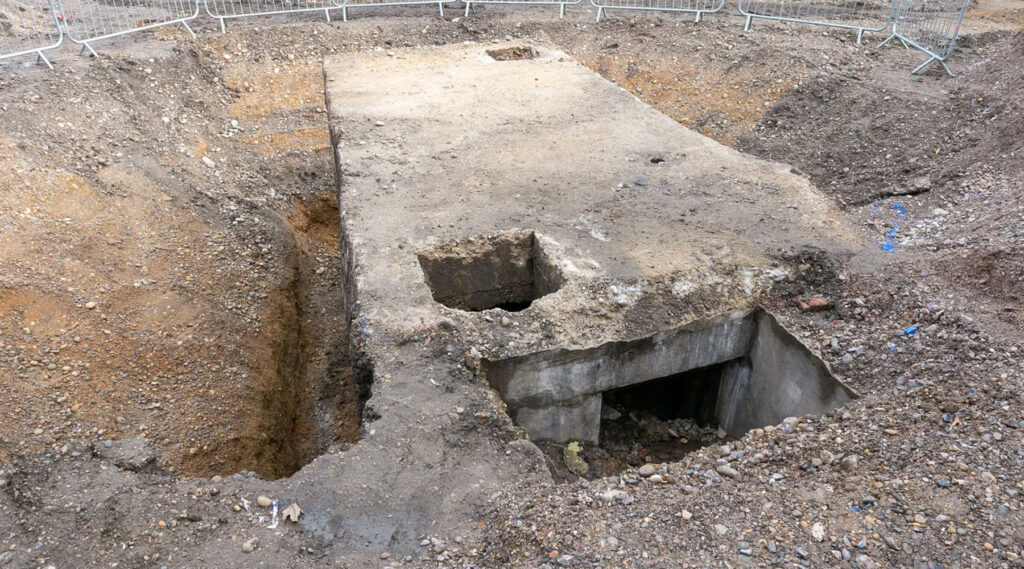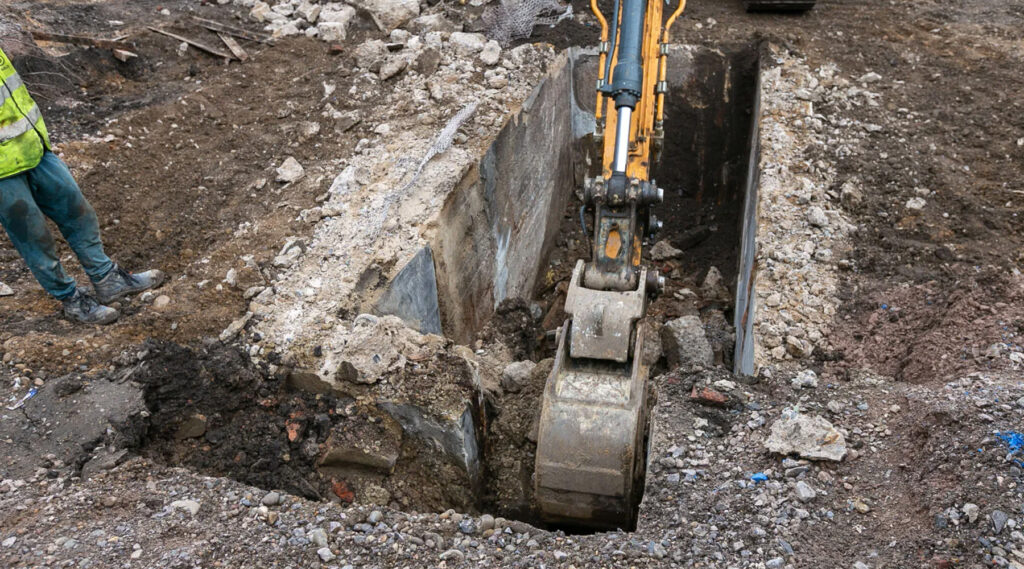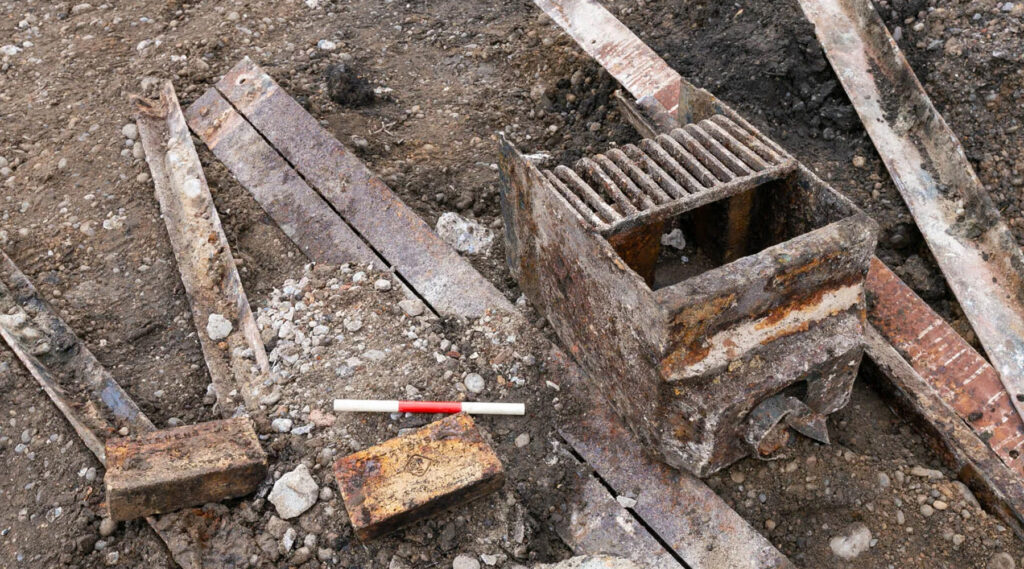An early example of a WWII air raid shelter has been uncovered during building site clearance works in Plumstead, in southeast London.
The air raid shelter was an unexpected discovery, as most are known about, and this one doesn’t seem to have been a private shelter, so would have been known about by the local community at the time. That makes its subsequent disappearance from the war records even more mysterious.
The site of the discovery isn’t being revealed due to client confidentiality.
Charlotte Matthews, Head of Historic Buildings and landscapes at Pre-Construct Archaeology (PCA) said “The amount of concrete used in the bunker suggests that it was built early on in the war because later on in the war building materials were in scarce supply. The air raid shelter reflects the fear people felt for their safety at the beginning of the war. Plumstead suffered particularly heavy bombardment due to its close proximity to the Woolwich Arsenal.”
It wasn’t safe to go inside so once the team had recorded the exterior with photos and a GPS plan, the contractors removed the roof of the bunker to clear the interior and record that for posterity.
PCA says that the design of the bunker shows signs of learning from WWI bunkers dug during the Great War, and this one comes with two air shafts, and is likely to have had two entrances. Earlier bunkers tended to have just one, which meant people could have been trapped inside if rubble blocked had the entrance.
If anyone has memories of the air raid shelter in Plumstead during WWII, they’re being asked to contact PCA so that they can get a better understanding of who built it and how often it had to be used.
PCA Project manager Jon Webster added that it’s “a sobering thought to think how many of that generation sat in bunkers just like this one and what thoughts must they have had? It’s a reminder that during the Second World War nowhere was truly safe and that everyone, young or old was forced to endure.”










“It wasn’t safe to go inside. . .”
The roof was hardly going to fall on you.
I don’t know the facts about this case, but never enter an unfamiliar, unventilated, enclosed space without testing for gases – toxic or flammable. You may not come out again!
Looks just like the one in Bexley Woods, which locals say was the ARP wardens’ bunker.
We still have an intact one at our place in central London. It’s big and allegedly built to take a thousand people.
My husband remembers a public shelter in the grounds of a school in Plumstead Road before you get to Plumstead Station ( somewhere opposite Gavin House). He never went in it as they had an Anderson shelter at home in Rippolson Road.
I have one similar to this in my garden. One entrance, brick built with a thick concrete roof. Our whole street had one each and ours is the last remaining one. I use it as a garden shed.